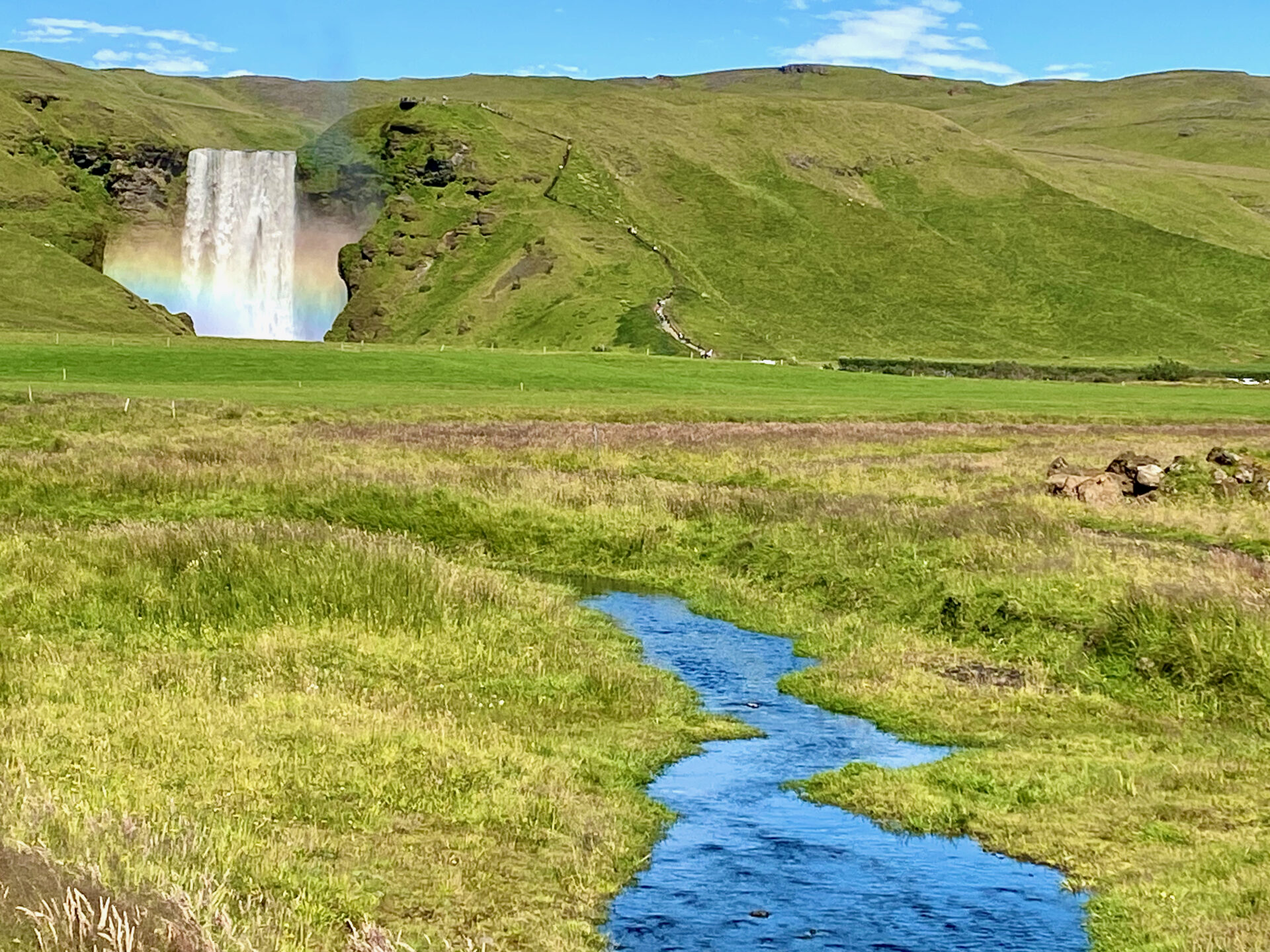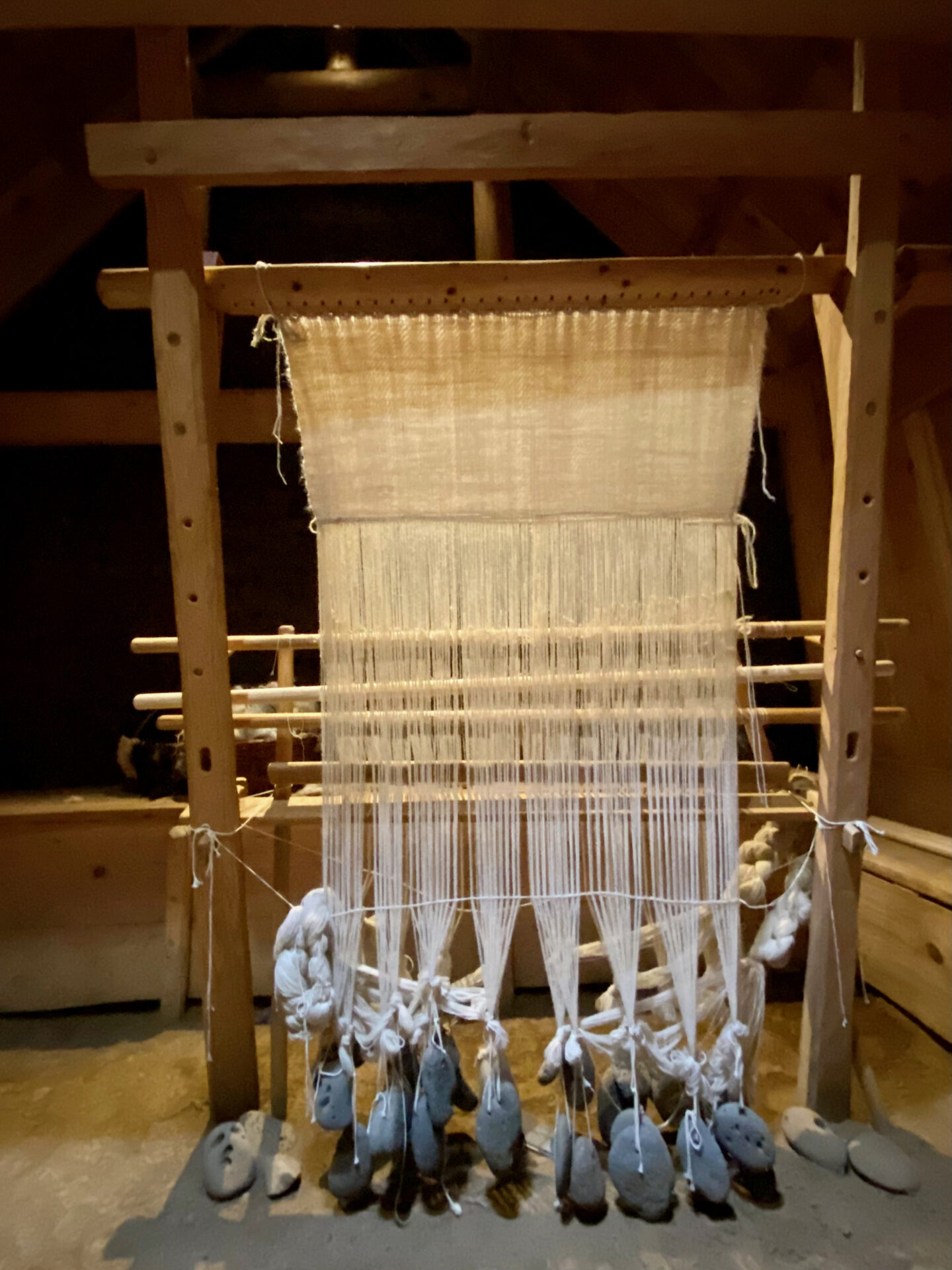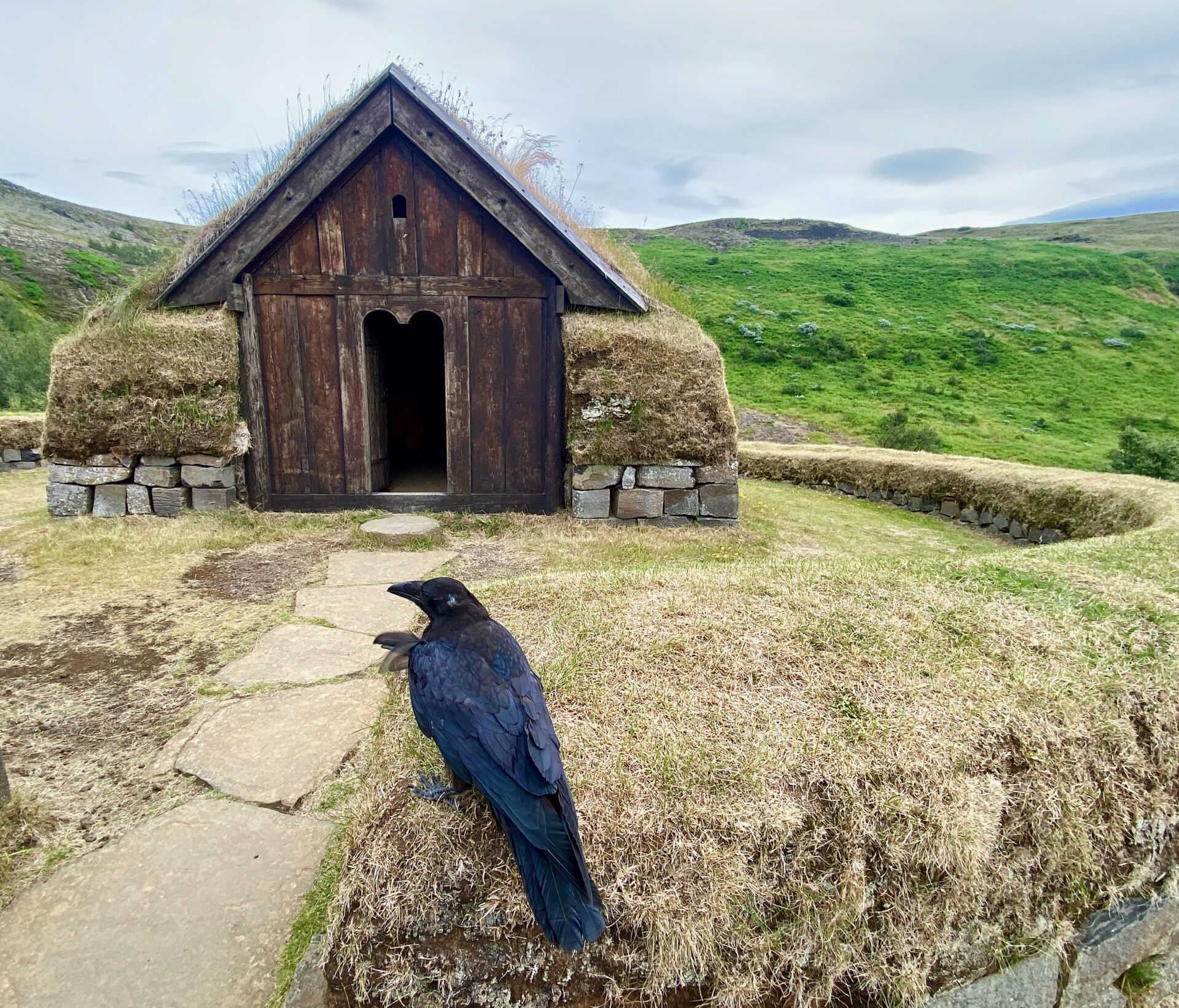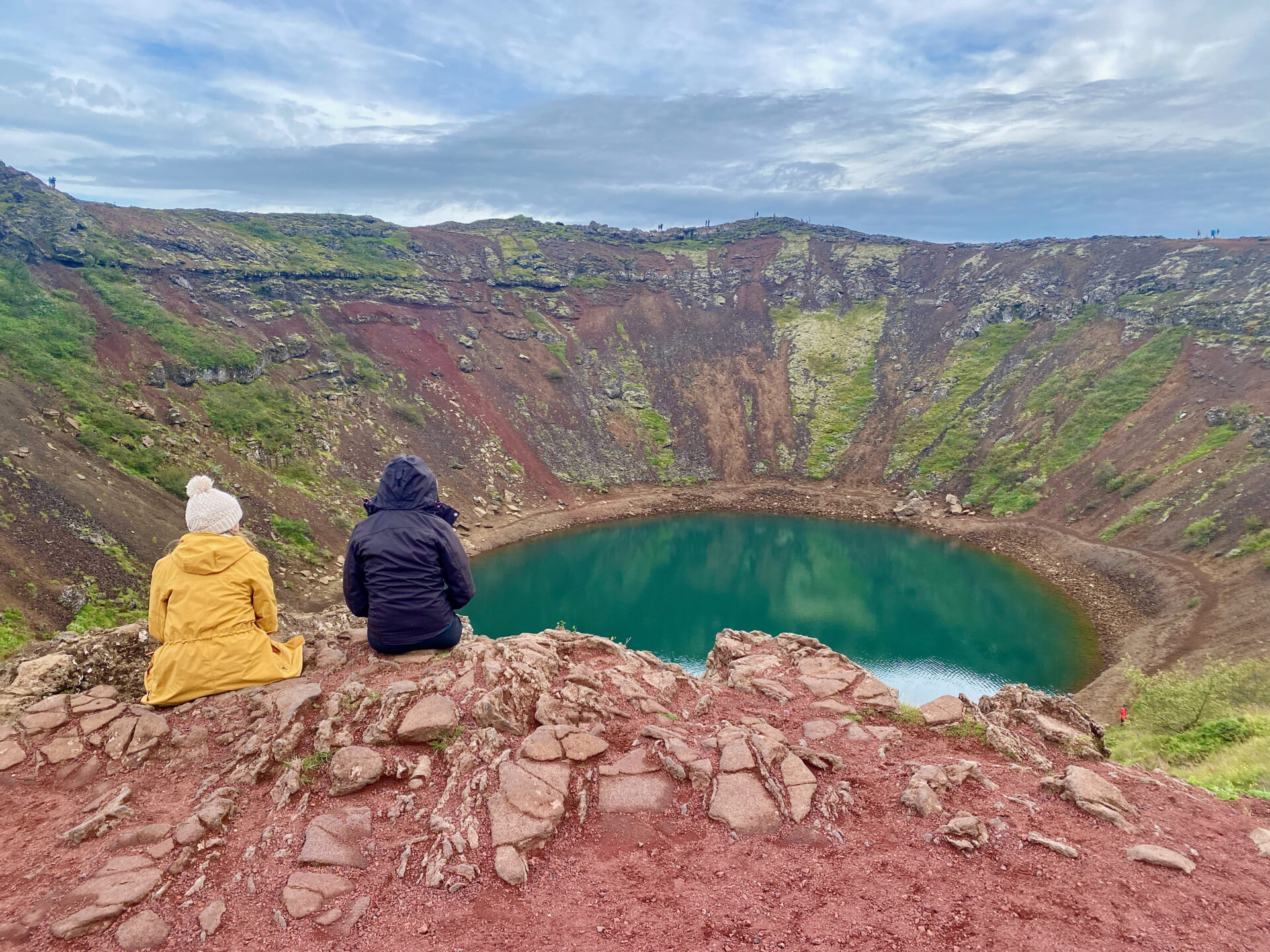
Skógafoss
The Icelandic poet Jónas Halgrímsson wrote:
“Our land of lakes forever fair
below blue mountain summits,
of swans, of salmon leaping where
the silver water plummets,
of glaciers swelling broad and bare
above earth’s fiery sinews –
the Lord pour out his largess there
as long as earth continues!”
In August 2023 I visited Iceland for the first time. Everything they say about Iceland is true: It is not just another destination, it is an inspiration. Nature’s drama unfolds with every step you take, and every step is a step into enchantment. It is a country where the Earth’s heartbeat can be felt, and a whisper of ancient tales.

Gullfoss
Iceland has 10,000 waterfalls. Gullfoss, the Golden Falls, were named after a farmer who had plenty of gold and could not bear the thought of someone else possessing it after his lifetime. To prevent this, he placed the gold in a coffer and threw it into the waterfall.
In the 1920s, foreign investors wanted to dam the Hvítá river and build a hydroelectric plant. The landowner, Tómas Tómasson, refused to sell to them, but the investors obtained permission from the government. Tómasson’s daughter, Sigríður, walked barefoot the Reykjavik to protest, even threatening herself into the waterfall should the project go ahead. Eventually, it was cancelled and Gullfoss became a nature reserve.

Goðafoss
In the year 1000, the lawspeaker of the Alþingi, Iceland’s National Assembly, was entrusted with the momentous task of deciding whether Icelanders should adopt the Christian faith. After meditating for 24 hours, he declared the country a Christian nation. On his way home, he threw his statues of the pagan gods into the waterfall, thus bestowing it with the name Goðafoss, Waterfall of the Gods.
But maybe this is a nineteenth-century legend, a fabrication. However, a window in Akureyrikirkja, the main church of Akureyri, Iceland’s capital of the North, illustrates the story.

Hraunfossar

Barnafoss
Barnafoss means “Children’s Falls”. A family with two boys lived at the nearby farm of Hraunsás. One morning, the parents went to mass, leaving their children at home. The boys knew a shortcut to the church, a stone bridge arching over the rapid waterfall. They started to cross it, but found the surging water below dizzying and fell to their deaths. Their grief-stricken mother veered towards insanity. Some say she turned to witchcraft, placing a rune on the bridge that made anyone who set to cross it plummet to their deaths just like her beloved sons. It is said Icelanders scratched runes to spread curses to their neighbours and rivals.

Skógafoss

Seljalandsfoss

Faxafoss

Þjórsárdalur

Þjórsárdalur

Þjórsárdalur

Þjórsárdalur

Þjórsárdalur

Þjórsárdalur
The Commonwealth Farm in Þjórsárdalur is the reconstruction of a Viking farm, an early medieval Icelandic farm. The Icelandic Commonwealth was a period of self-governing from 930 to 1262, characterized by a decentralized political structure and a unique system of governance known as the Alþingi, a national assembly where laws were made and disputes were settled.
The replica of the farm was modelled on the well-preserved ruins of a farm at Stöng which was abandoned after the eruption of the volcano Hekla in 1104.
The large farmhouse has a hall and a sitting room with benches and a hearth, a weaving site, board games, a pantry for the storage of food (skyr was collected in large casks that were partially dug into the floor), a bed chamber and lavatory. Next to the farm there is a medieval house of worship where the raven Huginn was awaiting us.

Fagradalsfjall
The Litli-Hrútur eruption in July 2023 is over for now, the Icelandic National Institute of Volcanology says. We did not make it to Litli-Hrútur, but the pitch-black lava field at Fagradalsfall is equally impressive.

Sólheimajökull
The Sólheimajökull Glacier has undergone large-scale changes due to climate change. In 2011, a lagoon began to form in front of the glacier and has been growing steadily, as the glacier continues to melt and retreat. An elementary Geoschool visits the site every year to measure the depth of the lagoon (60 m) and the retreating snout of the glacier.

Kerið
Kerið is a 6500-year-old crater with vivid red earth and a green lake. Björk once performed a concert from a floating raft in the middle.

Námafjall Hverir

Námafjall Hverir

Námafjall Hverir
Námafjall Hverir is a fascinating and weird place. A high-temperature geothermal area with fumaroles and mud pots. Along with the steam comes fumarole gas, such as hydrogen sulfide. The hot springs produce considerable sulphur deposits. In previous centuries, sulphur was mined to produce gun powder. The sulphur stench is strong.

Grótagjá
Grótagjá was a popular bathing place in a cave. Volcanic eruptions from 1975 to 1984 at Krafla brought underground magma streams resulting in a sharp rise in water temperature to 60 degrees centigrade. Today, the temperature is 43 – 46 degrees but bathing is no longer allowed.

Reynisfjara

Reynisfjara
Reynisfjara, the Black Beach in the south of Iceland, is a magical and eerie place. The weather was breaking: fog and gale force winds. Treacherous sneaker waves suck tourists into the sea, most recently in November 2022.
In Hálsanefshellir, a large basalt cave on the shore, seals that descend from humans come on land once a year and cast off their skin to dance and sing through the night. Early one morning, a fisherman from Mýrdalur was waking past the cave, when he heard sounds of festivities and dancing. Outside the cave lay seal skins. He took one of them home and locked it in a chest. When he returned to the cave a few days later, he found a young and beautiful woman. She was naked and crying desperately. She was the seal whose skin he had taken. He gave her clothes, comforted her and took her to his home. The two took a liking to each other and married. Their union was harmonious and several children were born to them. The woman would often sit and look at the sea. The man kept the skin locked in his chest and took the key with him wherever he went. Once, many years had passed, he forgot the key at home and rowed his fishing boat out to sea. On his return, the woman and the skin were gone. She had opened the chest, could not resist the temptation, put on her skin and plunged into the sea. Before she left, she uttered:
Woe is me,
I have seven children in the sea
And seven on land!
The man was greatly distressed. When he went fishing, a seal would often swim around his boat. When the children walked along the shore, the seal would swim close by and throw beautiful shells to them. But their mother never came back.

Stafnesviti Lighthouse

Svalbardseyri Lighthouse in Akureyri

Búðakirkja
After the first church in Búðir, a hamlet located on the peninsula of Snæfellsnes on Iceland’s West coast, was demolished and the parish itself was abolished, Steinunn Sveinsdóttir, a lady of the parish, fought for a new church. The authorities rejected her request. Eventually, she received a royal permission to build a new church. The door ring says: “This church was built in 1848 without the support of the spiritual fathers.”

Hrunakirkja
A long time ago, a priest was fond of merrymaking and pleasure at Hruni. Instead of holding a service on Christmas Eve, he would dance with his parishioners inside the church of Hruni. Una, the priest’s mother, told her son to stop the fun and start saying Mass, but the priest replied: One more round-dance, Mother!
As she was walking through the door for the third time, she heard someone speaking a rhyme:
Loud the mirth at Hruni
Lads sport beneath the moon-o
They dance to such a tune-o
Men won’t forget it soon-o
There’ll be no one left but Una
There’ll be no one left but Una
When she left the church she saw the man who had spoken the rhyme. He was standing at the door and looked like the Devil himself.
Una took her son’s best horse and rode to the nearest priest for help. By the time they reached Hruni, the church and the churchyard had sunk down into the earth, with all the people inside. Shrieking and howling could be heard from the underground.

Flugumýrarkirkja

Hvalsneskirkja

Reykholtskirkja

The altar cat of Reykholtskirkja

Icelandic traditional costume

Kirkjufell

Fishing community Grundarfjörður

Landscape in the North

Berserkjahraun
Long ago, a farmer from Hraun grew weary of having to walk around the Berserk lava field (Berserkjahraun) to visit his brother in Bjarnahöfn. Returning from a voyage to Norway, he brought with him two berserkers, violent fighters who were employed to work on his farm. To his dismay, one of the berserkers took a liking to his daughter. He asked the local chieftain, Snorri Goði, for advice, but Snorri had his eye on the farmer’s daughter himself and recommended setting the berserker an impossible task. The farmer promised the amorous berserker his daughter’s hand in marriage if he cleared a passage through the troublesome lava field. To the shock and horror of Snorri and the farmer, the two berserkers quickly set to work and managed to rip a passage through the treacherous moonscape. Rather than honouring his promise, the farmer trapped the berserkers in a sauna and murdered them, allowing Snorri to marry his daughter.
Today, a path through the Berserkjahraun can still be seen, and a grave was discovered containing the remains of two large men.

Reykjadalur
Reykjadalur is a hot river valley at the base of an extinct volcano. People sit in the stream, relaxing, chatting, drinking beer. Wooden footbridges run along the bathable segment. The temperature is 36 to 40 degrees; further upstream, the water is too hot for bathing.

Hrunalaug

Hvítserkur
Hvítserkur, the Troll of Northwest Iceland, is a basalt rock stack protruding from Húnaflói Bay. Hvítserkur wanted to rip the bells from nearby Þingeyraklaustur, the first convent in Iceland, because trolls, unlike elves, are said to be terrified of Christianity. Hvítserkur was so enraged that he did not notice the rising sun, and was petrified for eternity in its rays.
Iceland’s transition to Christianity was not easy; those who practised the religion of the Old Norse Gods were ostracised and punished.

Reykjavik, view from Hallgrímskirkja

Rainbow Street in Reykjavik

Hallgrímskirkja, Reykjavik

Faces of the North, by Ragnar Axelsson

Snotra
This is Snotra, the Queen of Núpar Cottages in Ölfus. Snotra came to visit us in the evening and stayed with us until midnight. She knows we are animal lovers and trusted us immediately. She wanted to share a bed with my son but he didn’t want to and she had to leave. We felt guilty, the night was cold. She came back the next day and stayed with us until we left. I miss her.
